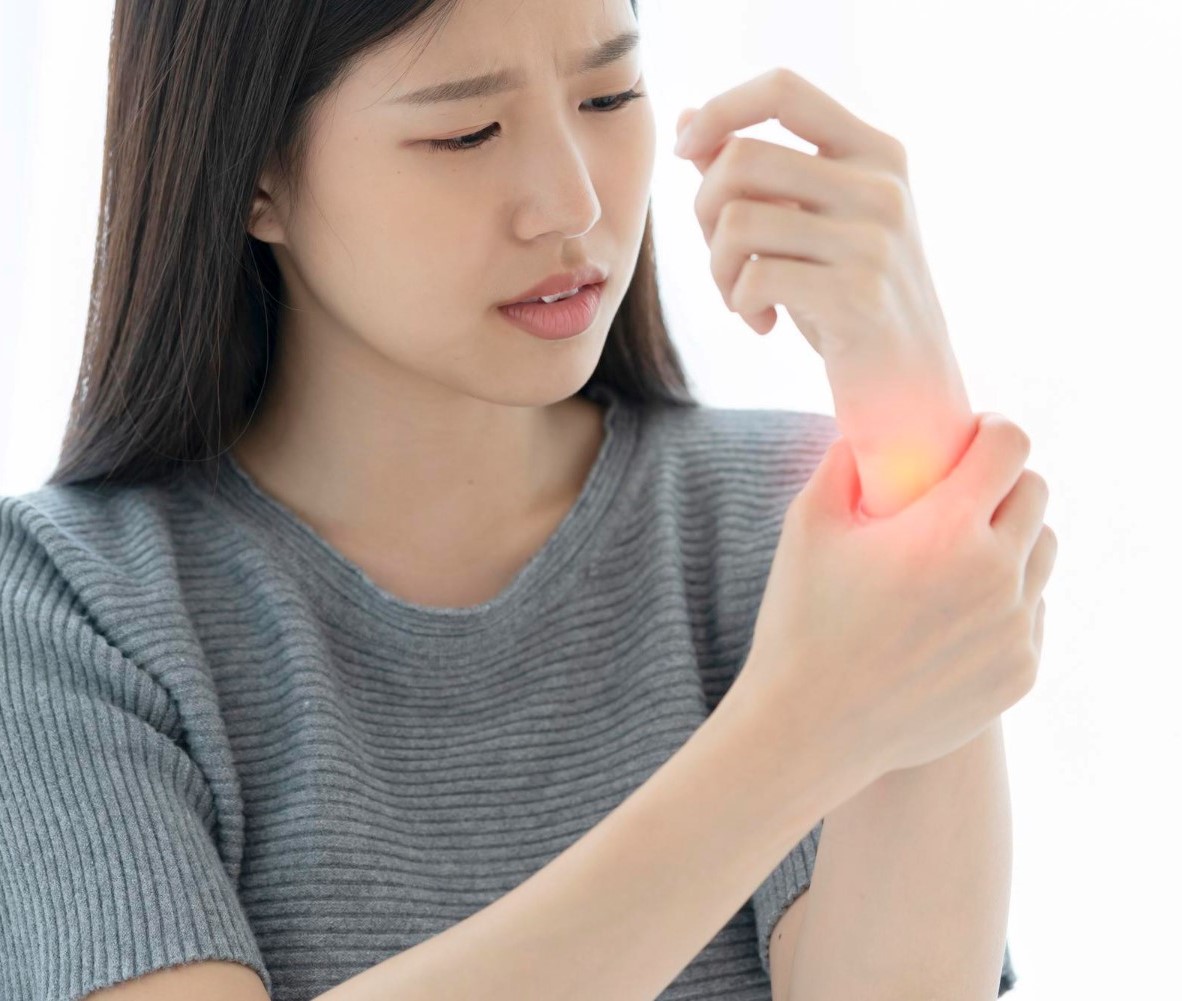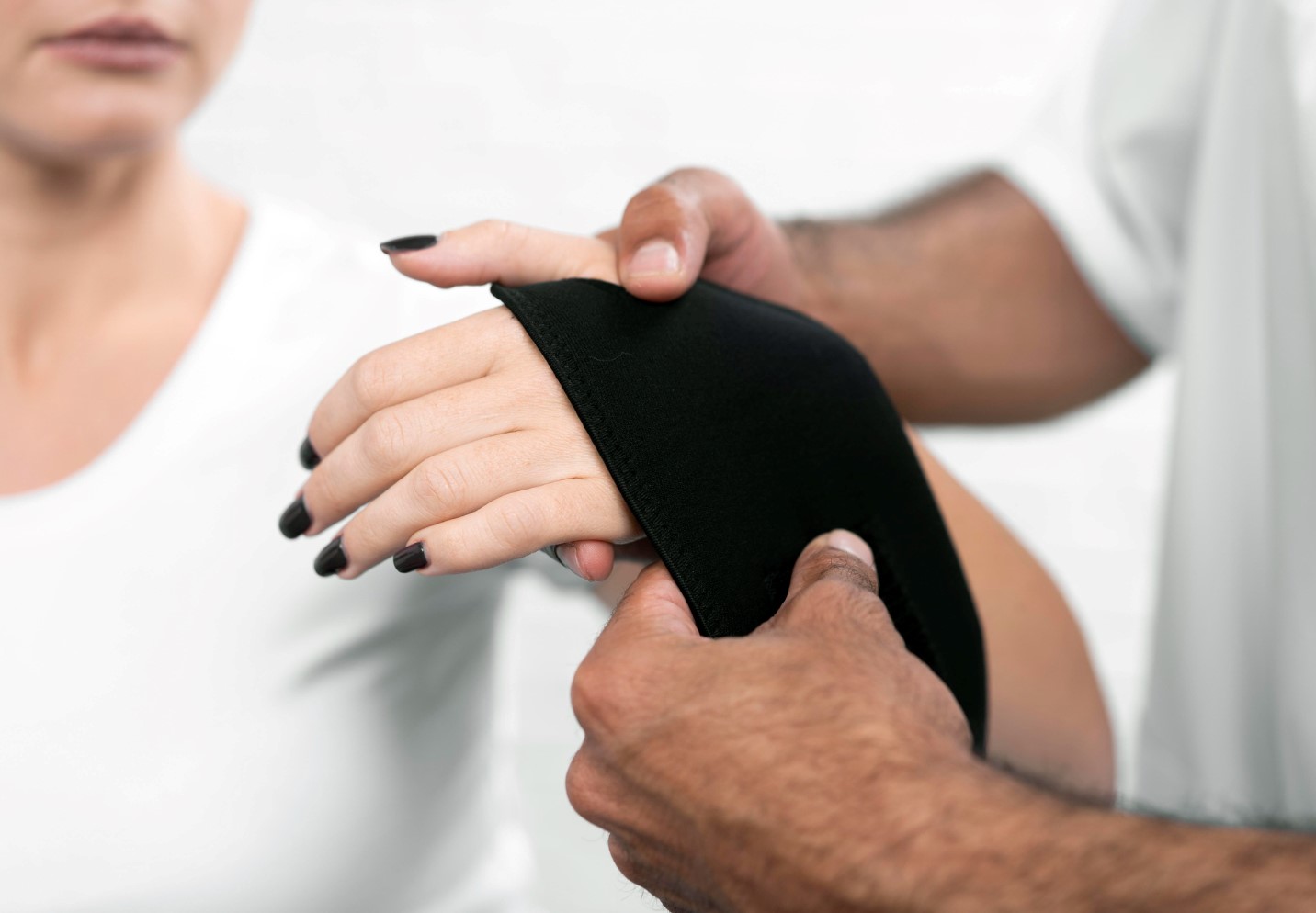De Quervain Tenosynovitis Specialist In Singapore

Dr Wang Lushun
Senior Consultant Orthopaedic Surgeon
MBBS (Singapore)
MRCS (Edin)
MMed (Ortho)
FRCS (Ortho) (Edin)
- Experience effective, lasting hand pain relief by treating your De Quervain tenosynovitis
- Fellowship-trained orthopaedic surgeon
- Internationally recognised, more than 5000 surgeries performed



What is De Quervain tenosynovitis?
De Quervain tenosynovitis is a painful condition that affects the tendons in your wrist that control the movement of your thumb. It’s usually experienced by people who frequently perform repetitive motions that involve gripping and twisting. Additionally, pregnant women and those with conditions such as rheumatoid arthritis are at a higher risk of developing De Quervain tenosynovitis. Without proper attention and treatment, it could lead to the following:
- Restricted movement and loss of strength in the thumb and wrist muscles
- Increased pain and swelling that spreads to the forearm
- Difficulty performing everyday tasks using the affected hand
- Development of a nodule (a small lump) in the affected area, possibly leading to a more severe form of tenosynovitis
Symptoms of De Quervain Tenosynovitis
De Quervain tenosynovitis can manifest in various symptoms that can impact your daily life. If you’re experiencing any of the following signs, seek medical attention:
Pain and tenderness in the wrist or thumb area
This is one of the most common symptoms, where you may experience pain when performing tasks that involve gripping or twisting, such as opening a jar or turning a doorknob.
Swelling and stiffness in the affected area
The swelling and stiffness in the wrist or thumb area make it challenging to perform everyday tasks.
“Sticking" or "snapping" sensation when moving the thumb
You may feel a sensation of the thumb "catching" or "snapping" when trying to move it, especially when making a fist or grasping an object.
"Creaking" sound when moving the thumb or wrist
In some cases, you may hear a "creaking" or "crackling" sound when moving the affected thumb or wrist, which can be a sign of inflammation and irritation.
Don’t let De Quervain tenosynovitis impact your quality of life.
Get proper diagnosis and treatment today.
Get proper diagnosis and treatment today.
Restore your overall hand function while reducing the risk of further damage and lasting complications.
Proper diagnosis and treatment of De Quervain tenosynovitis can help you get back to daily activities without pain by repairing your hand’s mobility and range of motion.
Am I a Candidate for
De Quervain Tenosynovitis Surgery?
Generally, your orthopaedic specialist will evaluate your condition and recommend non-surgical treatments first to provide you relief. If no improvements are seen with non-surgical treatments, your doctor will consider several factors to see if surgery is necessary, such as:


Can De Quervain tenosynovitis be treated without surgery?
Yes, De Quervain’s can be treated without surgery through conservative methods like rest, ice, anti-inflammatory medications, and splinting. If these don’t work, your doctor might recommend corticosteroid injections to reduce inflammation.
How can I prevent De Quervain tenosynovitis?
To prevent De Quervain’s, avoid repetitive hand and wrist movements, practice good ergonomics, and stretch your hands and wrists regularly. If you’re at risk, wearing a splint or brace can also help prevent the condition.
When Is The Best Time to Have De Quervain Tenosynovitis Surgery?
It's crucial to first try conservative treatments like rest, ice, medication, and splinting. If these methods don't provide relief or if your condition worsens, surgery might be necessary. In some cases, waiting too long to seek treatment can lead to complications, so consult an orthopaedic surgeon early on for proper diagnosis and treatment. Your doctor will consider factors like the severity of pain, limitations in movement, and any impacts on your daily activities before recommending the best course of action.
De Quervain Tenosynovitis Surgery Recovery Process
| Recovery Period | What to Expect |
|---|---|
| Immediately after surgery (1-2 days): |
|
| First weeks after surgery (Week 0-2): |
|
| Several weeks after surgery (Week 2-4): |
|
| First month after surgery (Week 4-6): |
|
Can I Use Medisave For De Quervain Tenosynovitis Surgery?
Yes, you can use Medisave to offset the cost of your procedure.
Reach out to us today to learn more about payment options.


Dr Wang Lushun
Senior Consultant Orthopaedic Surgeon
MBBS (Singapore)
MRCS (Edin)
MMed (Ortho)
FRCS (Ortho) (Edin)
Internationally Recognised & Double Fellowship-Trained Surgeon With Over 18 Years of Experience
- Bachelor of Medicine & Bachelor of Surgery (MBBS),
National University of Singapore - Member of The Royal College of Surgeons (MRCS),
Edinburgh, United Kingdom - Master of Medicine in Orthopaedic Surgery (MMed),
National University of Singapore - Fellow of The Royal College of Surgeons in Orthopaedics and Traumatology (FRCS), Edinburgh, United Kingdom
As a Senior Consultant Orthopaedic Surgeon and former Head of the Hip and Knee Division in Ng Teng Fong Hospital, he has won awards for superior patient outcomes (value driven), service quality and enhanced recovery programmes. His patients include current and former national athletes and sporting professionals.
Why Choose
Dr Wang Lushun?
Trusted
Leadership on Orthopaedic Advisory Boards
Skilful
Double Fellowships at Centres of Excellence
Experienced
Senior Consultant with Over 18 Years of Experience
Patient-Centred Orthopaedic Care
We are dedicated to your recovery and well-being. Every patient deserves the freedom that comes with active living. Whether you're an athlete sidelined by an injury or a weekend hobbyist desperate to return to your passion, our mission is to help you regain your mobility and independence.
Personalised Approach For Positive Outcomes
Our clinic prioritizes time dedicated to understanding each patient’s injuries and needs. Dr Wang strongly believes that personalised care & patient management will lead to better outcomes & positive experiences.
Minimally Invasive Techniques For Faster Recovery
Dr Wang’s extensive experience with minimally invasive procedures allows for less scarring, lower risk of complications and faster recovery compared to traditional surgical methods.
Aftercare Focused On Restoring Mobility & Well-Being
As an avid sportsperson, Dr Wang understands the time and patience required to regain mobility and return to active living. After your procedure is completed, Dr Wang will make sure your recovery is smooth and comfortable.
Insurance
We accept all patients, with or without insurance plans. Additionally, we are on the specialist panels of these Health Networks/Insurance Plans. Please contact us if you have any queries and we will be happy to assist you in checking with your insurance provider.
Our Clinic Locations
3 Mount Elizabeth, #13-14
Mount Elizabeth Medical Centre
Singapore 228510
820 Thomson Road, Mount Alvernia Hospital, #05-51, Medical Centre D, Singapore 574623
Frequently Asked Questions
Can De Quervain Tenosynovitis lead to permanent damage?
If left untreated, De Quervain’s can cause chronic pain and reduced function in the affected hand. Early diagnosis and treatment can help prevent permanent damage and ensure a full recovery.
What causes De Quervain Tenosynovitis?
De Quervain’s is often caused by repetitive hand or wrist movements, which lead to inflammation of the tendons. Other factors, like injury, arthritis, and pregnancy, can also contribute to the condition.
Can I exercise or play sports after De Quervain Tenosynovitis surgery?
Yes, you can gradually return to exercise and sports after surgery. However, you should wait until your surgeon gives you the go-ahead and follow their recommendations on resuming activities.
Can De Quervain Tenosynovitis come back after surgery?
Yes, De Quervain’s can recur after surgery, but it’s rare. To minimize the risk of recurrence, follow your surgeon’s post-operative instructions and maintain proper hand ergonomics during daily activities.
Can I drive after De Quervain Tenosynovitis surgery?
Avoid driving until your surgeon advises that it’s safe. This usually takes around 2-4 weeks, depending on your recovery progress and individual circumstances.